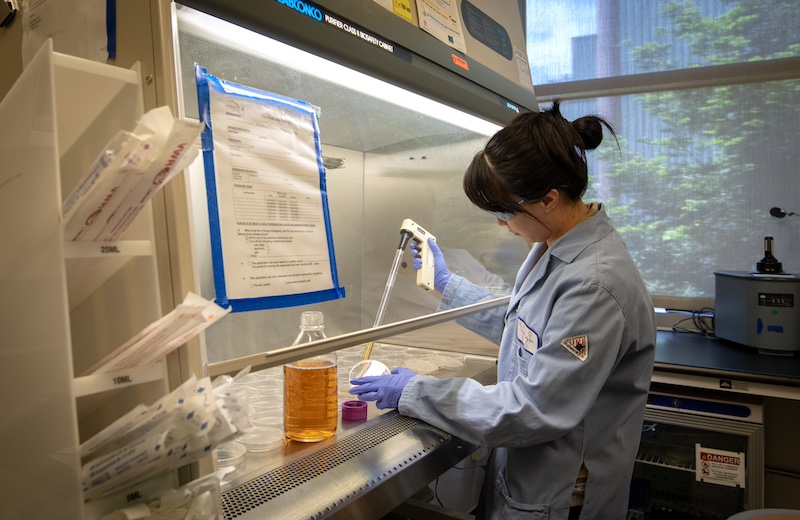
Work, or potential exposure to biological materials in the course of performing research or other work activities at Berkeley Lab, must be conducted in a safe, ethical, environmentally sound, and compliant manner. Work must be conducted in accordance with established biosafety standards, the principles and functions of Integrated Safety Management (ISM), Chapter 26 (Biosafety) of the Health and Safety Manual (PUB-3000), and applicable standards and LBNL policies.
The purpose of the Biosafety Program is to protect workers, the public, agriculture, and the environment from exposure to biological agents or materials that may cause disease or other detrimental effects in humans, animals, or plants. This program applies to work that includes:
- Biological materials, agents, and other materials of biological origin (e.g., organisms, cells, viruses, and toxins) that pose different levels of risk to humans, animals, or plants when stored or used; or
- Workers who may be exposed to disease-causing biological agents related to designated job duties.
Line management and researchers are expected to define their work with biological materials, evaluate the biological risks, and implement the required biosafety containment controls. This is accomplished with the assistance and oversight of the Institutional Biosafety Committee (IBC), the Environment, Health, and Safety Division (EHS), and other Berkeley Lab EHS functions. The Work Planning and Control Activity Manager system is used to facilitate and document the above process and ensure compliance. Refer to Work Chapter 26, Process A “Starting and Conducting Work Safely” for more information.
Email Biosafety@lbl.gov or contact Biosafety SME (whom to call) if you have questions or other concerns about Biosafety.
Additional resources relating to biological safety, including proper use of biosafety cabinet, permits, transportation, sharps safety and biological waste are available at the following website: Biological Safety

